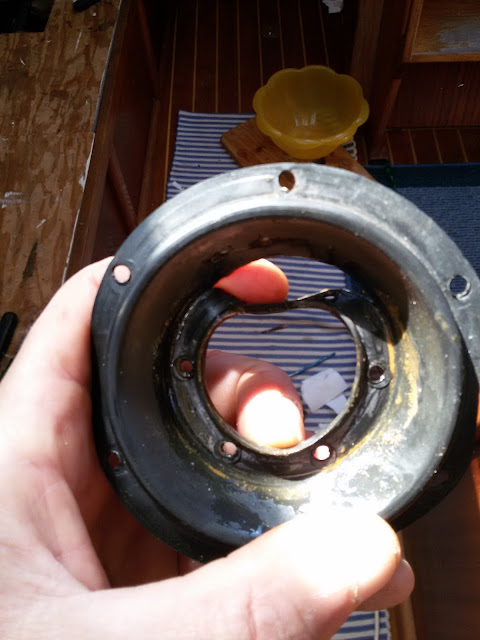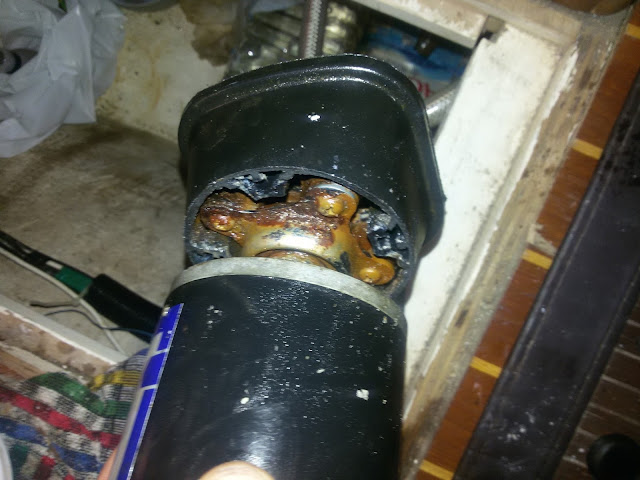In my last post, I said I could now disassemble and assemble a foot pump in a flash. I was wrong. I should have said that "I can now destroy a pump pretty damn fast!"
In case you didn't read my last post (and I don't blame you because it's really boring), I fixed the foot water pump...sort of...it started working again but leaked like a waterfall.
I took it apart again, so fast and easily that it didn't satisfy the mechanic's itch. The diaphragms "seemed" a bit loose so I disassemble them too. Then I tightened them real good, so good one split open.
 |
| It's fixed for ever and an eon. |
My next victim was the electric water pump which I haven't used in years. Why? Because I ruined the pressure switch by running the tap with just a dribble to save water. Which means the switch kept going on and off like a machine gun. And, yes, I confess, it was the second pump I dispatched in that manner (fools never learn). Not finding a switch for sale, I bought a new pump. Those were the days I was still making good money.
 |
| Removed the Plastimo water pump from the bilge. |
 |
| It was pumping great when I last used it about 6 years ago. Now the pump part is full of crud and won't spin. The motor spins like it was new. |
After all that work and after washing the dishes from lunch by pouring water from a jug (highly ineffective and messy), I went for a stroll around the marina.
 |
| An acquaintance of mine stopped over on his way to the Algarve on a replica of Slocum's Spray, which he built himself out of plywood in record time. |
The vinegar dissolved most of the crud and the motor worked perfectly. But when I attached the pump section, it just stuck. A little grunt and nothing more. I hit it repeatedly with a rubber mallet, swore, threatened it with fierce-looking vice-grips. Nothing. Merda!
Back at home, a Youtube video taught me that the bearing is seized. OK, so now I know how it works, which was beyond my comprehension. No, I'm not going to buy a new bearing. I think I'll just scratch my head for a while.
I think I still have the original electric pump in a plastic bag some place in the garage.





















